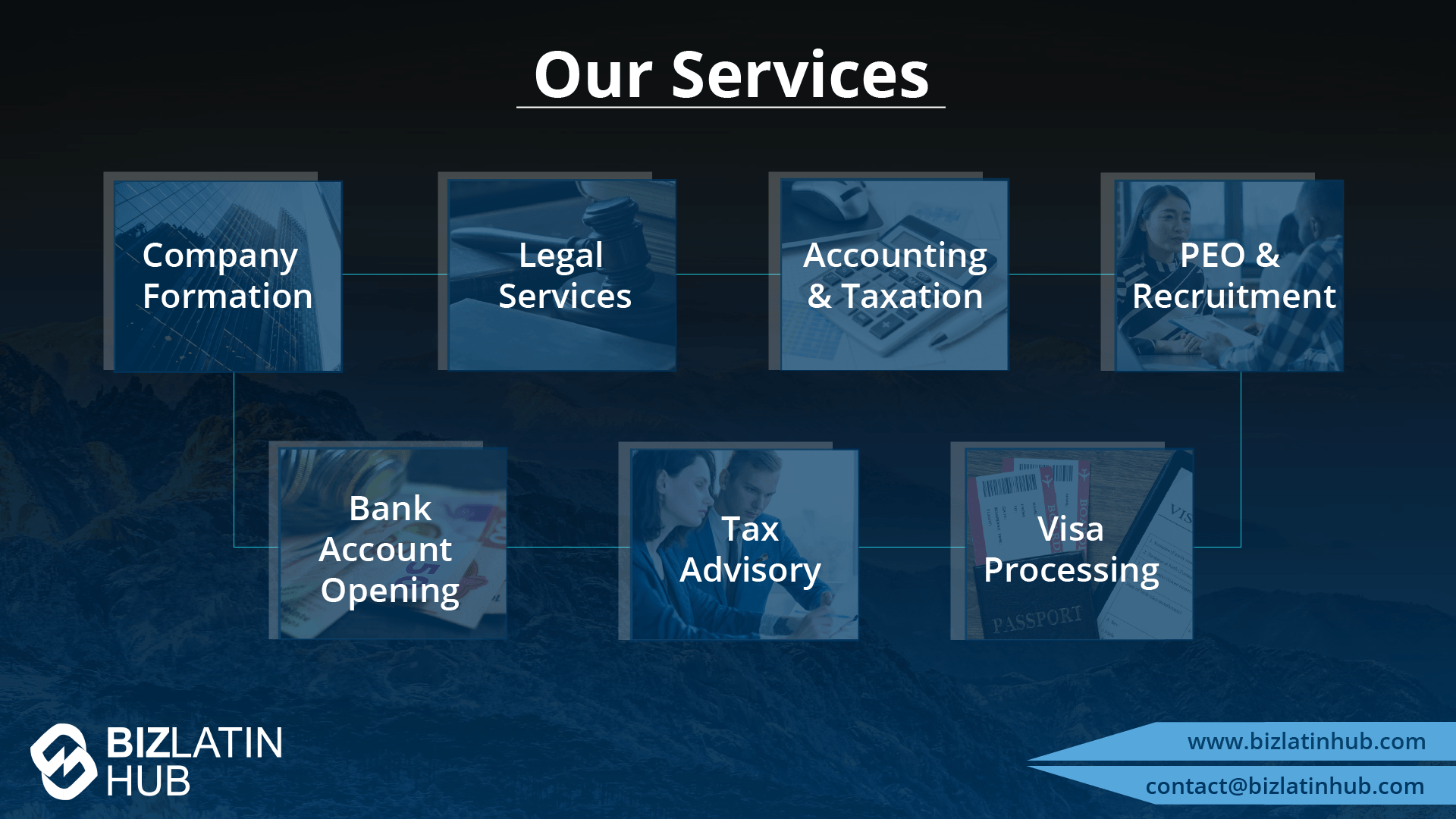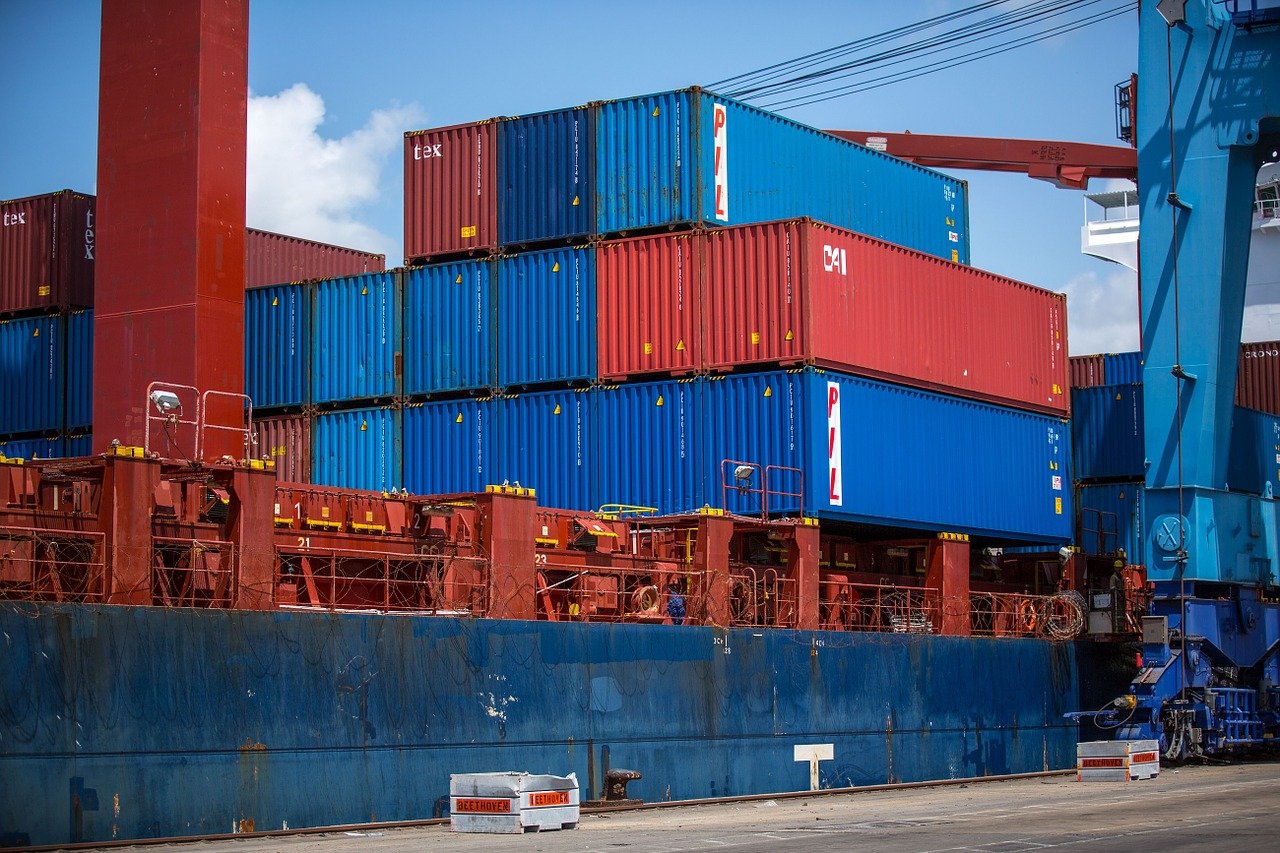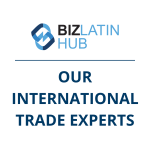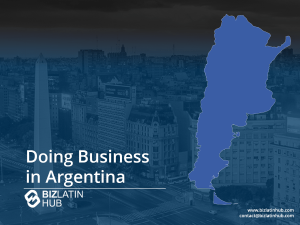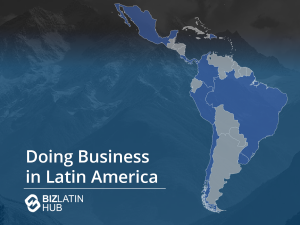According to the Economic Commission for Latin America and the Caribbean’s (ECLAC) latest projections, Latin America’s GDP is set to grow in 2024, with regional goods exports expected to increase by 4%. The Commission’s analysis shows export volumes expanding by 5% while prices may decline by 1%. This growth is particularly driven by Latin America’s four biggest economies: Brazil, Mexico, Argentina and Colombia.
The World Trade Organization’s October 2024 Statistical Review indicates that the region’s trade performance varies significantly by subregion, with the Caribbean showing remarkable 23% export growth, while South America and Mexico demonstrate more modest gains at 5% and 2% respectively.
That’s a significant vote of confidence for the region and has caught the attention of investors and businesses worldwide. This is valuable information for those who want to form a company in Brazil or elsewhere in the region. The Inter-American Development Bank’s 2024 Trade Trends Report highlights that although Latin American economies have faced various challenges in the last decade, 2024 marks a turning point with strengthening trade relationships and growing export diversification.
At Biz Latin Hub, we know all about importing and exporting from the area, as no one knows Latin America and the Caribbean as well as we do. With 18 dedicated local offices across the region, we have every base covered. Our array of back office services can help you all the way from company formation and market entry right through to compliance with local laws and even termination if necessary.
Regional Integration and Trade Opportunities
The landscape of Latin American trade is being reshaped by strengthening regional relationships and integration. According to the Economic Commission for Latin America and the Caribbean (ECLAC), intra-regional trade has shown remarkable resilience with a 4.2% growth rate in 2024, particularly in digital services between Brazil, Argentina, and Uruguay.
A landmark development occurred in December 2024 when, according to Euronews, the EU-Mercosur trade agreement was finalized, creating one of the world’s largest free trade areas encompassing 780 million people. The Council on Foreign Relations’ 2024 analysis shows MERCOSUR’s significance as the third largest integrated market globally, with a total trade value reaching USD 46 billion in 2022. Within this bloc, Brazil accounts for 60% of the GDP, Argentina 30%, while Paraguay and Uruguay each contribute 5%.
This regional integration is complemented by individual country strengths. For example, Paraguay’s Ministry of Economy reported in May 2024 that the country’s total trade reached USD 12 billion, with key exports including:
- Soy (USD 1.789 billion)
- Electricity (USD 608 million)
- Soy flour (USD 348 million)
Meanwhile, imports focused on:
- Petroleum (USD 963 million)
- Telephone devices (USD 785 million)
- Automobiles (USD 267 million)
Key Markets and Trade Opportunities by Country
Let’s examine how each major economy in the region is leveraging these integration opportunities:
How does importing and exporting work in Brazil?
According to the Brazilian Ministry of Economy’s 2024 Trade Report, Brazil maintains its position as a major regional powerhouse economy. As a member of BRICS, the country has strengthened its international trade partnerships, particularly with other BRICS nations. The OECD’s 2024 Economic Survey of Brazil highlights the country’s robust infrastructure and transportation system that facilitates trade, noting significant improvements in port efficiency and logistics networks.
How to import into Brazil?
According to the World Trade Organization’s latest country profile, Brazil’s top import partners remain China (32.3%), the United States (16.2%), and the European Union (18.4%). The Brazilian Central Bank reports that top imports include high-technology industrial inputs, chemical products, refined petroleum, transportation equipment, and electronics.
A recent study by the Brazilian Institute of Geography and Statistics (IBGE) shows that Brazil is not traditionally a large importing nation compared to similarly sized economies. The country’s agricultural sector drives significant imports of organic chemicals and fertilizers, with the Food and Agriculture Organization (FAO) projecting that Brazil will account for 70% of the world’s arable land growth by 2050.
How to export from Brazil?
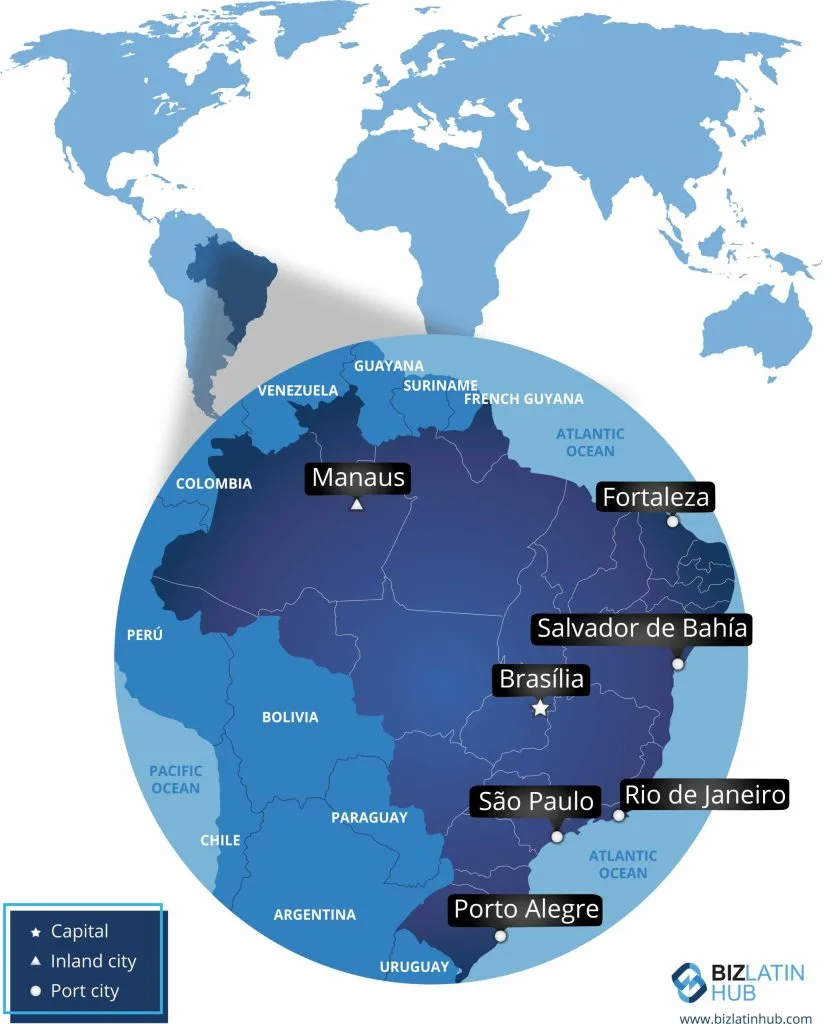
According to the Brazilian Foreign Trade Secretariat (SECEX), Brazil’s export profile remains diverse, with mineral products (iron ore and crude petroleum) leading at 24%, followed by agricultural products (22%), and manufactured goods (21%). The Ministry of Agriculture’s 2024 report shows that Brazil has maintained its position as the world’s largest soybean exporter, with China remaining the primary destination, accounting for 67% of Brazil’s soybean exports.
The Brazilian Trade and Investment Promotion Agency (ApexBrasil) reports that Brazil’s top export partners are China (32%), the United States (12%), and the European Union (16%). Recent data from the Central Bank of Brazil indicates that 42% of Brazil’s export goods are directed to Asian markets, reflecting the country’s strategic pivot toward Asian economies.
The World Bank’s 2024 Commodity Markets Outlook suggests that Brazil’s heavy reliance on commodity exports makes it vulnerable to price fluctuations. In response, the Brazilian government has launched initiatives to diversify its export base, particularly in value-added sectors such as processed foods, advanced manufacturing, and technology services.
How does importing and exporting work in Mexico?
According to the Mexican Secretariat of Economy’s 2024 Trade Report, Mexico’s strategic advantages in international trade continue to grow. The country’s geographical position, with access to both the Atlantic and Pacific oceans and sharing a 3,145-kilometer border with the United States, provides unique trade opportunities. The World Trade Organization notes that Mexico maintains one of the world’s most extensive free trade agreement networks, covering 46 countries through 13 FTAs.
How to import into Mexico?
The National Institute of Statistics and Geography (INEGI) reports that Mexico’s top imports consist of machinery and electrical equipment (43%), vehicles and auto parts (12%), mineral products (8%), and plastics (7%). According to Mexico’s Central Bank, the country’s primary import partners are the United States (43.8%), China (21.2%), the European Union (12.1%), Japan (3.9%), and South Korea (3.7%).
The Mexican Association for Economic Research (AMEI) identifies significant opportunities in importing advanced manufacturing technologies. Their 2024 analysis suggests that companies bringing innovative industrial automation and Industry 4.0 technologies could benefit from Mexico’s growing manufacturing sector and its integration into global supply chains.
How to export from Mexico?
According to INEGI’s latest foreign trade report, Mexico’s export profile is dominated by manufactured goods (88.7% of total exports). The Mexican Automotive Industry Association (AMIA) reports significant growth in the sector, with vehicle production reaching 3.8 million units in 2023. According to the Ministry of Economy’s automotive sector report, Mexico has become the world’s seventh-largest vehicle producer and fourth-largest exporter. Major manufacturers including Volkswagen, General Motors, Ford, and Tesla have either expanded or announced new manufacturing facilities in Mexico during 2023-2024, capitalizing on the country’s strategic location and skilled workforce.
The Boston Consulting Group’s 2024 analysis of Mexico’s automotive sector highlights that the industry’s transformation toward electric vehicles (EVs) is creating new opportunities. Their report indicates that Mexico’s EV production capacity is expected to triple by 2026, driven by investments from both traditional automakers and new EV manufacturers.
Mexico’s National Institute of Statistics (INEGI) notes that while the United States remains the primary export destination for Mexican vehicles (79.4%), the industry is actively diversifying its market reach. Recent trade agreements, particularly the modernized EU-Mexico agreement, have opened new opportunities in European markets, where Mexican automotive exports grew by 15.3% in 2023.
The Bank of Mexico’s 2024 Economic Report highlights that the United States remains Mexico’s primary export market, receiving 81.3% of Mexican exports. However, as noted by the Mexican Council on Foreign Trade (COMCE), the country is actively diversifying its export destinations, with growing shares to the European Union (4.7%), Canada (2.8%), and China (1.9%).
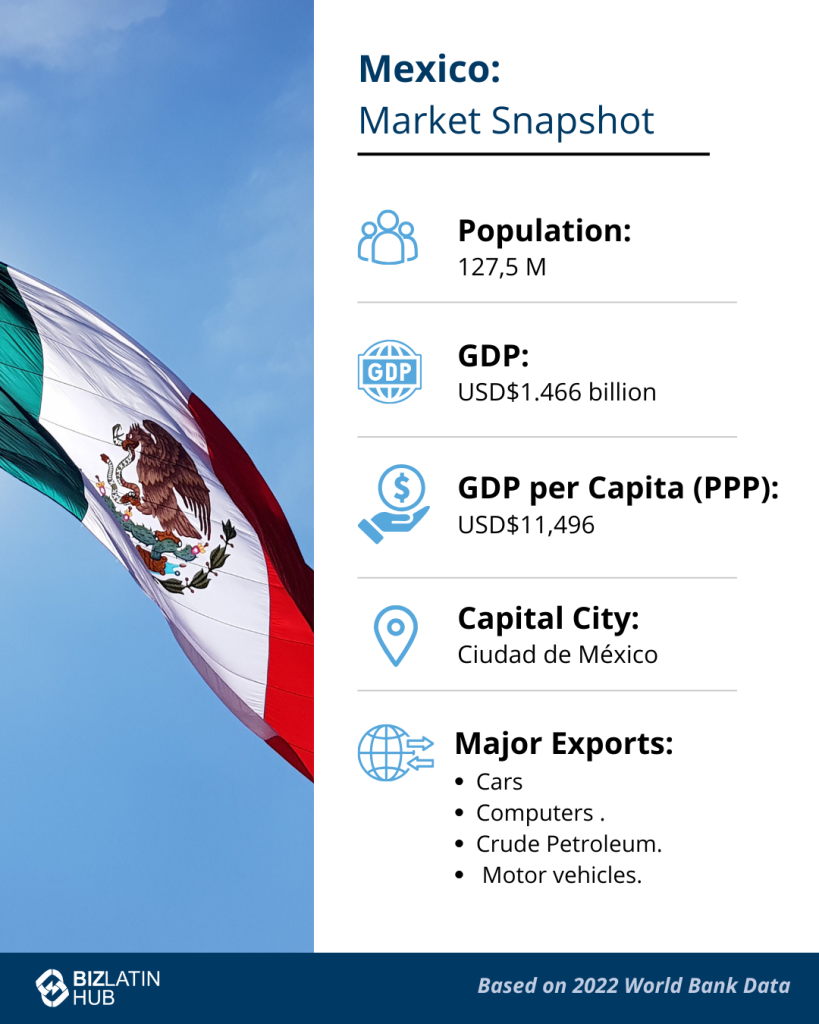
According to a 2024 study by the Wilson Center’s Mexico Institute, Mexico’s manufacturing sector maintains significant cost advantages over other economies, particularly in specialized and high-tech manufacturing. The United Nations Economic Commission for Latin America and the Caribbean (ECLAC) reports that Mexico’s integration into North American supply chains has deepened, with nearshoring trends accelerating since 2023.
Mexico has a cost advantage for specialized manufacturing over many other economies. It therefore presents expansion opportunities for firms looking to secure low-cost production and set up manufacturing facilities. For firms that manufacture goods using different inputs, Mexico’s proximity to the United States can help to shorten supply chains.
The automotive industry in Mexico is growing every year. Volkswagen and General Motors are just a few of the international brands who have set up manufacturing plants in the country and the export opportunities for Mexican vehicles are plentiful.
Mexico’s exports are highly concentrated and dependent on the United States. Therefore, Mexico is more susceptible due to shocks following changes in the US economy. The country is looking to shift its high trade dependence on the United States in coming years – opening opportunities for other nations to grab a slice of the pie.
How to import and export to/from Argentina?
As a founding member of MERCOSUR and a key player in regional trade integration, Argentina’s role in Latin American commerce continues to evolve. The country’s participation in various trade agreements and special customs areas makes it an essential gateway for regional trade. According to Argentina’s National Institute of Statistics and Census (INDEC), the country’s strategic position within MERCOSUR has facilitated significant growth in intra-regional trade, particularly with Brazil and Uruguay.
How to import into Argentina?
The Argentine Chamber of Commerce’s 2024 Trade Report shows that the country’s import profile is dominated by high-technology products and industrial inputs. INDEC’s latest data reveals that Argentina’s top imported products include:
- Advanced telecommunications equipment (23.4% of imports)
- Automotive components and vehicles (18.7%)
- Industrial chemicals and intermediates (15.3%)
- Energy products including refined petroleum (12.8%)
- Industrial machinery and equipment (11.2%)
The Ministry of Foreign Affairs reports that Argentina’s primary import partners have shifted, with Brazil leading at 21.3%, followed by China (18.7%), the United States (12.4%), Germany (5.8%), and Mexico (3.9%). This trade pattern reflects Argentina’s deepening integration within MERCOSUR and its growing ties with Asian economies.
The Argentine Investment and Trade Promotion Agency highlights that the country’s special customs areas and free trade zones, particularly those connecting with other MERCOSUR nations, offer significant advantages for companies using Argentina as a regional distribution hub. These zones have seen a 15% increase in activity during 2023-2024, driven largely by e-commerce and digital services growth.
How to export from Argentina?
According to INDEC’s 2024 Foreign Trade Report, Argentina’s export profile demonstrates strong regional integration while maintaining global reach. The report highlights that Argentina’s total exports reached USD 78.4 billion in 2023, with the following sectoral breakdown:
- Agricultural and food products (44.3%)
- Manufactured goods (31.2%)
- Primary commodities (15.8%)
- Fuel and energy (8.7%)
The Ministry of Agriculture’s latest data shows that Argentina remains the world’s largest exporter of soybean meal and oil, third-largest corn exporter, and a leading wheat exporter. Within MERCOSUR, Argentina has strengthened its position in value-added agricultural products, with processed food exports to Brazil growing by 18.3% in 2023.
The Argentine Chamber of Industry (UIA) reports significant growth in regional manufacturing exports, particularly in:
- Automotive vehicles and parts (predominantly to Brazil)
- Pharmaceuticals (to neighboring countries)
- Machinery and equipment
- Chemical products
- Processed foods
The Argentine Agency for International Trade and Investment notes that the EU-MERCOSUR agreement is expected to boost Argentina’s exports by eliminating tariffs on 93% of agricultural products and creating new opportunities for industrial goods. Their 2024 analysis projects this could generate an additional USD 4.5 billion in annual exports by 2026.
The country’s digital services exports have also shown remarkable growth, with the Knowledge Economy Ministry reporting a 25% increase in software and IT services exports in 2023, primarily to other Latin American markets. This reflects Argentina’s emerging role as a regional tech hub within MERCOSUR.
How does importing and exporting work in Colombia?
Colombia is strategically well placed, with deep sea ports on both the Pacific and Atlantic coasts. Logistics and infrastructure serve these ports well and there are a number of busy cargo airports. The country is an OECD member as well as being an associate of Mercosur and full member on the Community of Andean Nations. This all makes importing and exporting from the country easy and hassle-free.
Importing into Colombia
Colombia’s top imports are machines (high percentage broadcasting equipment), chemical products, transportation, mineral products and metals. other big groups are foodstuffs, textiles and medical instruments. Top countries for Colombian imports are United States, China, Mexico, Brazil and Germany.
The importation of equipment that supports the Colombian agricultural sector has potential. New technology that can help the productivity, efficiency and quality of the agricultural products and services is necessary. The Colombian government also offers subsidies on the importation of agricultural equipment. Technology and knowledge transfer has further developed the agriculture sector, leading to opportunities for countries with expertise in this area.
Exporting from Colombia
More than half of Colombia’s exports are mineral products (crude petroleum and coal briquettes) followed by coffee, cut flowers, bananas, chemical products (including pesticides), and gold. Top export partners are United States, Panama, China, Netherlands, Mexico, and Ecuador.
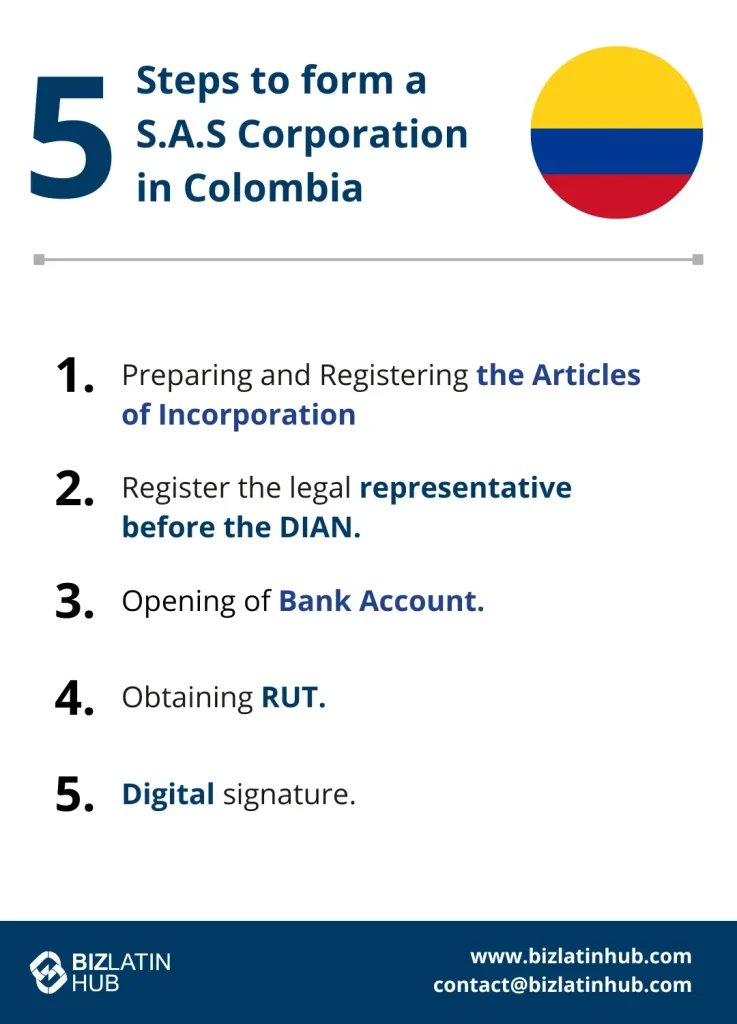
Colombia is being transformed into an export platform. Foreign firms such as Coca-Cola are setting up manufacturing plants to maximize Colombia’s geographical position as a gateway to Latin America. Benefits such as a cost-competitive and profitable business environment backed by government support make manufacturing in Colombia a real opportunity.
Another export opportunity in Colombia is that of medicinal cannabis. A sector that was legalized in August 2017, the market is expected to reach USD$243 billion by 2025. With land and a climate that is perfect for its cultivation, the government now issues licenses for the legal manufacture of medicinal cannabis. As legalization becomes more common throughout the world, the export opportunities are huge.
Biz Latin Hub can help with importing and exporting across Latin America
If you are interested in trade between Latin America and your country, whether it be exporting or importing, Biz Latin Hub has the expertise to help you.
With country offices throughout Latin America, our staff can offer specialized advice and guidance to help you set up in Latin America.
Reach out to our team today to get started.
